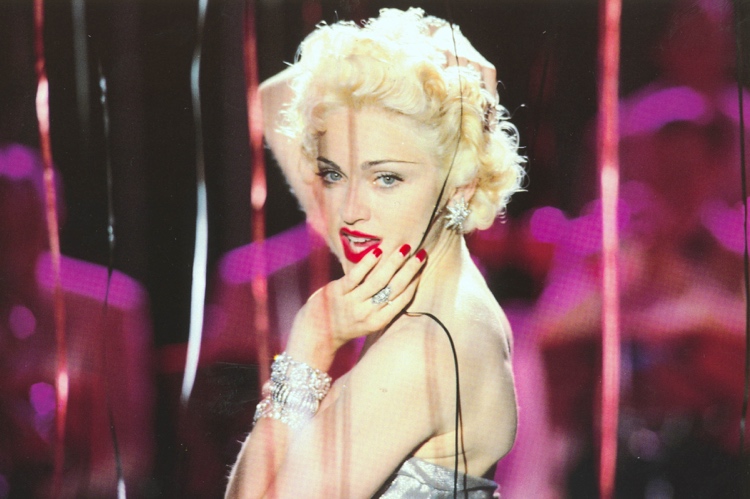Human design: what is it? The system promotes personality development
Nowadays there are numerous personality teachings and they all try to answer basic answers about human character and to predict our actions. It is questionable whether and to what extent the individual methods of self-development are really based on scientific principles. The accuracy of the horoscopes, the chakra teachings and the hexagram is also unclear. Here comes a relatively new concept to help. The Human Design System combines the basic principles of astrology and current scientific knowledge. The teaching is based on the assertion that we really only know a fraction of our character and have the potential to fully develop our positive character traits. It offers tools that everyone can use to develop their strengths and promote their personal development. The Human Design Chart supports us in our task of finding the way to self-discovery and self-love. We explain in detail what is behind the concept and how you can use it in everyday life.
Why the Human Design System can better define our character than horoscopes and predict our actions

What is the Human Design System and how does it work? The concept is relatively new and was developed by Alan Robert Krakower 33 years ago. Krakower, born in Montreal, was reported missing in 1984, but reappeared in Ibiza after more than 4 years. There he started to develop his concept about human personality.
In his book “The Human Design System”, which he published under the pseudonym Ra Uru Hu, he explained the basic principles of the new teaching. It was inspired by the 2000-year-old Chinese book “Yi Jing” and influenced by the Kabbalistic, Hindu and Buddhist traditions. The book itself is not based on one or more religions. Ra tried to find commonalities between the different concepts and to systematize them. The end result was a work that was considered “experimental” at the time.
What are the basic principles of human design teaching?

According to Ra Uru Hu, our personality develops from birth to death. This personal code system that each of us has determines how we behave and how we interact with others. However, this development is predictable. Theoretically, if we know our own character, then we could predict our actions in certain situations. In fact, none of us knows his character in details. We know only a small part of our true self and our behavioral mechanisms. Most of our character is in the so-called gray zone. That’s why there are always surprises and we ask ourselves: “Why did I actually react like this?”

In a perfect world, we shouldn’t change anything about ourselves. But since we are constantly faced with new challenges, we may lose our inner balance and have to re-establish it. This is where the Human Design System comes in. By analyzing the date of birth, the time of birth and the place of birth, everyone can create a peculiar character card that lists their individual personality traits. The graphic shows not only the strengths, but also the areas that you can continue to work on. The goal of such an analysis is to learn through self-discovery, to make the right decisions faster, to build relationships with other people and to solve problems more effectively. After an in-depth self-analysis, everyone should be able to use the information from the chart in their everyday life, as well as counteract learned actions and interactions. The system should also help us to accept ourselves as we are. Fears, despair and frustrations can be successfully overcome.
Human design is a concept, it is not a religion, it is not a sect and it is not a psychotherapeutic treatment. The system should simply help to get to know our strengths and weaknesses better. There are no concrete answers about our life, about concrete fears and cannot predict the future. If you think you need therapy, you should definitely see a doctor.
Human design: explanation of the most important terms

Human design is a complicated lesson. In order to give you a better idea of the basic principles, we will briefly define the most important terms for you. The Human Design System answers the most important questions about our character, our role in society and the meaning of our life.
- The 9 energy centers: What traits do you have?
- Outer and Inner Authority: How do you make decisions? Do you trust your “inner voice”?
- Human design type: How do you navigate society, what role do you play in it?
- Cross of Incarnation: What is the meaning of your experiences, your experiences and, accordingly, your life? What will you leave after your death?
To help you understand the terms better, a human design body graphic comes to the rescue. There they are nine centers in our body to see that are marked on the chart with triangles or quadrilaterals. Each center describes certain skills or traits. The centers in your body can be colored or uncolored on your personal chart. If they are colored, it means that you already master the skills. If they are white (i.e. open), this is a learning topic for you.
The nine human design energy centers at a glance

- Root: These are the roots that give us support in difficult times. Root describes our ability to mobilize quickly. If the “Root” rectangle is open on your human design body graphic, then you should deal with the topics of everyday stress, stress management and time management.
- Sacred: The sacral center stands for vitality, joie de vivre and sexuality. It encourages us to stay active and to take the initiative. The people with whom this center is active are called generators. A manifesting generator is a person who makes his decisions quickly, but then can no longer change the chosen course. Example: You are invited to a party and have to decide whether to go or not. In the early afternoon, think about it and decide to go. But after work, you suddenly realize that you are tired and no longer want to party. A manifesting generator would still go to the party because he was already prepared for it. The negative consequences: bad mood and tiredness the next day. So if the sacral center on your human design body graphic is colored red, you should exercise patience. Conversely, if the sacral center is white, you should learn to mobilize your strength as quickly as possible.
- The Spleen center is responsible for our health and our immune system. In this center, life events are perceived instinctively and thus form a database in our head. The open spleen means that you stick to this database and don’t dare to try something new. This prevents any spontaneity. A possible learning topic for you is then overcoming fear.

- Solar pexus is the center that is responsible for your emotions. These are strong feelings like love, hate or grief. You cannot be controlled with the mind. If this center is open on your graphic (i.e. uncolored), then this is an indication that they often cannot recognize their emotions correctly. Learning topics: recognizing feelings, fighting nervousness and being patient.
- Ego center stands for strong will, determination and persistence. The people with whom the heart center is colored set goals and pursue them. Around 70% of all test subjects have an open ego center. So you are adaptable and flexible, but cannot recognize these positive traits. Instead, they think they are messy, compare themselves to others and think that they will never be so successful. Therefore, such people often suffer from depression. Learning topic: self-discovery and self-love.
- The G center stands for orientation. It is the magical power that we describe as the “destiny”. Thanks to this power, we can intuitively orientate ourselves in the world and meet the people who play an important role in our lives. We cannot influence the G-Center, it works and we should trust it.
- The Throat center stands for expression. It helps us express our thoughts, find like-minded people, make friends and cultivate relationships. An open throat symbolizes communication problems.
- At the top are two triangles, the green triangle is called Anja and stands for the mind and the yellow one means human design inner authority sacral and emotional and mind head and represents the thoughts. If one of these centers is open, it means that you are thinking too much about everything. However, since the centers of your feelings are not well developed, you have no choice but to continue to make logical decisions.
Human Design: The “Not Yourself” topic

We all hear it every day that we should be ourselves. In fact, most people find it difficult to find the way to inner peace and contentment and to accept themselves as they are. This leads us to the non-self issue. The concept is very simple: the better we know each other, the more core competencies we have and can better master the challenges of everyday life. Conversely: People with whom the majority or even all energy centers are open do not feel themselves. This leads to negative experiences, disappointment and hurt feelings. Even more so, people who don’t know themselves rely only on their minds when making decisions. This later leads them to question their decisions.
If we are not aware of our strengths, we often suffer from depression. Depending on what type of human design you are (see below), other negative feelings may also arise.
- Manifestor: The not self topic leads to anger
- Projector: Becomes bitter when he deals with the non-self topic.
- Generator: Feels frustrated
- Reflector: is disappointed.
The road to self-love and self-discovery can be long and difficult in some cases. The Human Design System offers several possible solutions depending on the type you belong to.
Human design authority: what is behind the term?

We spend our first years on Earth studying. We learn to make decisions and derive the consequences. Now too often we make mistakes. We gradually imagine that we are deficient, that we cannot make the right decision and that we lack core competencies. This negative attitude can significantly slow down the decision-making process. Even if we make the right decision, we continue to doubt our skills. Therefore, our minds cannot effectively process the information later.
The human design authority theory says that we shouldn’t just rely on our minds. We should of course think about which is the right decision. But it is also important to learn to trust our inner voice. The inner voice actually describes our inner conviction that decision A is the right one. This belief is referred to in human design as inner authority. There are 5 different types of inner authority, each of which activates a specific field on the human design graphic. If you have a human design chart, the individual centers are colored on it. Here is an overview:
Human Design: Inner Authority

1. With Solar plexus (activated by around 47% of people) is used in human design emotional authority designated. This emotional authority is strong in the majority of people tested. You make decisions spontaneously under the influence of intense emotions. Only after the decision has been made will the consequences be considered. This means that the mind is turned on afterwards. Examples: You buy a piece of clothing that doesn’t match your style of clothing at all and that you would never actually wear. Or you spontaneously decide to sell your house and go on a world tour. Basically, it doesn’t matter if you make spontaneous decisions every now and then. If this is the only case, problems arise all too often.
2. As sacred authority are people who trust your gut feeling. That is about 11% of all test subjects. You think through the individual problem solutions and the mind sorts out the unfavorable decisions from all variants. For the final decision “yes or no”, people trust their gut feeling. This is usually the best way to make decisions. On the one hand because you can think about the possible consequences and make the best choice, on the other hand because you trust your inner authority. Such people are mostly satisfied with the decisions made afterwards.

3rd The spleen authority is very similar in principle to the sacred. There is one major difference. With sacred authority, the person consciously thinks about the decision and with spleen authority, the decision-making process is rather unconscious. In some cases, the “inner voice” can contradict the mind. This usually happens when we overestimate our powers.
4. That Ego center is active in less than 4% of the people tested. You have a really strong will and a realistic self-esteem. Unfortunately, such people usually struggle with public opinion in your life. Too often they set goals that violate social norms, and very rarely they find supporters.

5. That Brain center own people who are projectors. These are the so-called trendsetters who create and enforce the trends. They succeed in convincing their fellow human beings and convincing others of their rights. Because of this, you become a professional speaker or PR for various organizations, lawyers, celebrities and influencers.
6. The Ajna / the head / the throat refers to the human mind. People who have a strong definition of this center only make decisions after a lot of thought. You have no gut feeling and no “inner voice”. Instead, logic comes to their aid. In this sense, such people actually have no inner authority.
7. The external authority refers to the thought patterns of others that we perceive as ours. In today’s society, it is not just the family and the media that are trying to influence our way of thinking. Numerous forums, blogs and Instagram accounts do the same. So there is only one way out for modern man: how should we constantly question external authority and only take up the thoughts that bring something positive for us. In this way we keep our inner balance.
The four human design types at a glance: generator, projector, manifestor and reflector

Perhaps the most important information related to your own character is given by the so-called human design types. Each of us belongs to one of the four types: generator, projector, manifestor or reflector. You determine how we act in everyday life and make decisions. Which type you belong to depends on which of the nine energy centers are colored (i.e. active) on your human design body graphic.
Human design type: projector

A human design projector cannot work alone, it needs a social environment to feel good. Projectors have the ability to recognize and understand the thoughts and feelings of their friends and family. They have empathy with other people and are easily influenced by others. Projectors are therefore rarely suitable for working independently. In a team they feel much more comfortable and often act as mediators between their colleagues. They also have a supporting function in the family and help to resolve conflicts. Communication between a human design projector and a generator is usually easy, provided that the generator recognizes the talents of the projector and shows its gratitude.
Around a quarter of the people tested are projectors. Suitable professions for projectors are department heads, HR managers, team leaders.
Human design type: generator

With a human design generator, the sacral center is very active. The generator trusts its inner voice and can quickly mobilize its inner strength. He is very active, both in the office and at home. In any case, there is a risk that he will act too chaotically. He plans a lot, but his ideas are rarely realized. That is why a generator should learn to sort out the thoughts and only really step on the gas when it is worth it.
Around a third of all people tested are generators. Suitable professions are, for example, workers in a plant, craftsmen, routines. Practically all professional fields in which the employees are given specific tasks and should solve specific problems.
Human design: manifesting generator

In principle, the manifesting generator is a normal generator. However, there is a fundamental difference between the two types of human design: the manifesting generator develops certain thought patterns over time. This helps him to react quickly. Unfortunately, his learned reactions to certain events often turn out to be wrong. A manifesting generator should therefore learn to trust its inner authority. The key word here is patience, don’t act immediately, but think first.
Around a third of the generators are manifest generators. Suitable professions are all that require a quick response: emergency doctors, firefighters, athletes.
Human design reflector

Reflectors are open people who have the ability to listen to other people and learn from their experiences and mistakes. A human design reflector is very open and expects other people to trust it. A reflector itself can be the first to signal problems because it communicates with many people and can get a uniform picture of its social milieu.
Less than 2% of all people tested are reflectors. The majority of them are freelancers, artists or small business owners.
Human Design Type: Manifestor

The manifestor is independent and independent. He acts as he sees fit. The parents of a manifesto child are therefore facing a major challenge. They always try to teach him that he should pay attention to his fellow human beings, but he only pays attention to his own interests. Manifestors often try to influence others, sometimes negatively, sometimes positively.
Less than 8% of all people tested are manifestors. Suitable jobs for them are politicians, human rights experts, department heads, spokespersons.
Human design incarnation cross

The “Human Design” teaching not only researches personal traits, but also the role of people in the world. The Human Design System has been influenced by Buddhism, among others. So Ra Uru Hu created an incarnation cross, which is inspired by the Buddhist wheel of life “Bhavachakra”. With this cross of incarnation, Ra Uru Hu tries to provide answers to the three most important existential questions:
1. What is the meaning of our life?
2. How can we remain in the collective consciousness of society after our death?
The Cross of Incarnation is intended to answer these questions. It consists of 6 human design lines that form a hexagram. His goal is to research the energy activations of the earth and the sun. There are over 190 variations and combinations of earth-and-sun positions. Accordingly, there are over 190 incarnation crosses. Most people at the age of 38-42 ask themselves the first question: “Why am I on earth, what is the meaning of my life?” Then it is also the right time to have a personal incarnation cross made.

The cross of incarnation graphic is divided into four quarters. It starts with the initiative of the human mind. Then comes civilization, which uses the energy of the human mind to create material things. Next comes the duality that relates to human emotions (positive and negative). In the end comes the mutation that stands for development. The supporters of the Human Design System assume that the mutation is the last step in recognizing self-worth.
Human design body graphics and rave mandala: interpretation of the individual elements

The human design system illustrates the connection between the individual elements through a rave mandala and a body graphic. In the following we will explain to you what role each element plays.
Human design gates, lines and channels: meaning and interpretation

The nine energy centers do not exist independently of each other, but are connected to each other by human design gates, human design lines and human design channels. Now we explain to you what role the individual elements play. Above you see the graphic of the so-called rave mandala, which incorporates elements of I ’Ching, astrology in the western countries, the Kabbalah teaching and Tantric Hinduism. The following elements are shown on the graphic:
- 64 hexagrams in the rave mandala (outer circle)
- 64 gates located at the exit and entrance of the 9 energy centers. These gates connect the individual energy centers with each other.
- 384 lines (6 lines for each goal)
- 36 channels
The rave mandala is created based on your personal data and can have numerous activated zones. The activated zones are colored. A total of up to 26 activated human design gates and up to 156 activated human design lines.
The 64 human design gates are connected by 36 channels. Each channel can only connect two gates and, accordingly, two energy centers. If the channel is defined (colored), then you have the traits and the core competencies that it describes. If it is open (undyed), you still have to learn in this area.
There are a total of 384 human design lines on the graphic, which can be divided into 6 groups. The first group is the ego lines. Your positive and negative traits, hopes and fears are listed here. People in whom the second line is pronounced are considered to be “spiritual”. People in whom the third line is pronounced are keen to experiment. Line number 4 stands for social engagement, openness and exchange. Line number 5 represents the expectations of family, friends and society from us. The 6 line stands for people who inspire, move and influence others.
Human design colors and tones: what motivates us?

The Human Design System not only researches how we make decisions, but also what motivates us in everyday life. There are 6 main colors, each color represents an emotion that either motivates or demotivates us.
1. Human design colors: fears. The first of the human design tones motivates us to survive. Yes, fears can also have a positive impact on our lives. Inner fear can lead us to find followers with similar views. Or make us think. When we are afraid, we think about every action and every decision.
2. Human design color: hope. Hope also gives us strength and support to survive. It is closely related to the human spirit and also to our spirituality.
3. Colors 3 and 4 motivate to learn. The third color stands for desire and purpose.
4. The 4th color helps us our needs to define exactly.
5. + 6. The colors 5 and 6 (Guilt and innocence) motivate us to listen to our inner voice.
The Human Design System promotes personal development and offers tools with which we can get to know our strengths and weaknesses better. It’s not about astrology in the truest sense of the word, although the system is based on it. It is much more about experimenting and thinking about your own character, communication with other people and the future. It trains self-love and makes it easier to make decisions.
Further useful information can be obtained from: Jovian Archive.com, humandesignamerica.com, humandesigncollege.com.
The post human design: what is it? The system promotes personality development appeared first on Deavita.com | Living ideas, design, hairstyles, make-up, lifestyle, health and beauty tips.





















